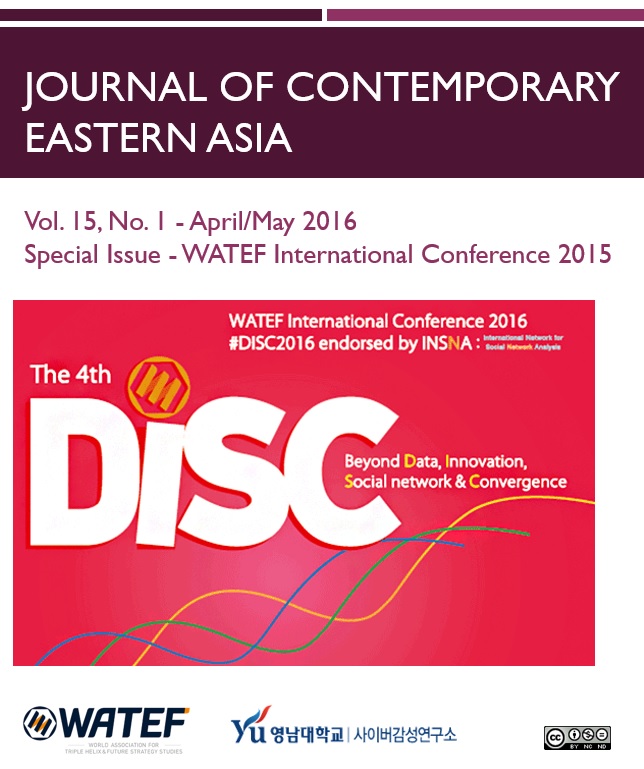- KOREAN
- E-ISSN2383-9449
- SCOPUS
 E-ISSN : 2383-9449
E-ISSN : 2383-9449
Interacting or Just Acting? -A Case Study of European, Korean, and American Politicians' Interactions with the Public on Twitter
Abstract
Social media holds the potential to facilitate vertical political communication by giving citizens the opportunity to interact directly with their representatives. However, skeptics claim that even when politicians use "interactive media," they avoid direct engagement with constituents, using technology to present a façade of interactivity instead of a genuine dialogue. This study explores how elected officials in three regions of the world are using Twitter to interact with the public. Using the Twitter activity of 15 officials over a period of six months, we show that in addition to the structural features of Twitter that are designed to promote interaction, officials rely on language to foster or to avoid engagement. We also provide evidence that the existence of interactive features does not guarantee interactivity.
- keywords
Reference
Bimber, Bruce. The Internet and Political Mobilization: Research Note of the 1996 Elec-tion Season.
Braghiroli, Stefano. Politicians Online! MEP ommunication Strategies in the Internet Era, EPIN Working Paper No. 29.
Delli arpini, Michael X.. Gen.com: Youth, ivic Engagement, and the New Information Environment.
Downes, Edward J. and Sally J. McMillan. Defining Interactivity: A Qualitative Identifi-cation of Key Dimensions.
Giles, David. Parasocial Interaction: A Review of the Literature and a Model for Future Research.
Goffman, Erving. The Presentation of Self in Everyday Life.
Hemphill, Libby,JahnaOtterbacher and Matthew A. Shapiro. What's ongress doing on Twitter?.
Hyland, Ken. Stance and Engagement: A Model of Interaction in Academic Dis-course.
Jankowski, Nicholas W., Kirsten Foot, Randy Kluver andSteve Schneider. The Web and the 2004 EP Election: Comparing Political Action Web Sites in 11 EU Member States.
Kiousis, Spiro. Interactivity: A oncept Explication.
Levy, Mark R.. Watching TV News as Para-social Interaction.
Lilleker, Darren G.,Karolina Koc-Michalska, Eva Johanna Schweitzer, Michal Jacunski, Nigel Jackson andThierry Vedel. Informing, Engaging, Mobilizing or Interacting: Search-ing for a European Model of Web ampaigning.
Lilleker, Darren G. and asildaMalagon. Levels of Interactivity in the 2007 French Presi-dential andidates' Websites.
McMillan, Sally J., ed. Leah A. Lievrouw and Sonia Livingstone. Exploring Models of Interactivity from Multiple Research Traditions: Users, Documents and Systems, The Handbook of New Media: Social Shaping and Con-sequences of ICTs.
McMillan, Sally J.. A Four-part Model of Cyber-interactivity: Some Places are more In-teractive than Others.
Norland, Jan-Erik. Media Interaction.
Rafaeli, Sheizaf. Interacting with Media: Para-social Interaction and Real Interaction.
Rafaeli, Sheizaf and Fay Sudweeks. Networked Interactivity.
Rheingold, Howard. The Virtual Community: Homesteading on the Electronic Frontier.
Stromer-Galley, Jennifer. On-line Interaction and why andidates Avoid it.
Stromer-Galley, Jennifer and Kirsten A. Foot. itizen Perceptions of Online Interactivity and Implications for Political ampaign ommunication.
Van Dijk, Jan. The Network Society: Social Aspects of New Media.
- Downloaded
- Viewed
- 0KCI Citations
- 0WOS Citations
